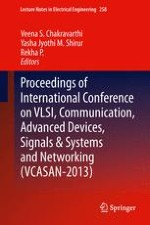2013 | Book
Proceedings of International Conference on VLSI, Communication, Advanced Devices, Signals & Systems and Networking (VCASAN-2013)
Editors: Veena S. Chakravarthi, Yasha Jyothi M. Shirur, Rekha Prasad
Publisher: Springer India
Book Series : Lecture Notes in Electrical Engineering
